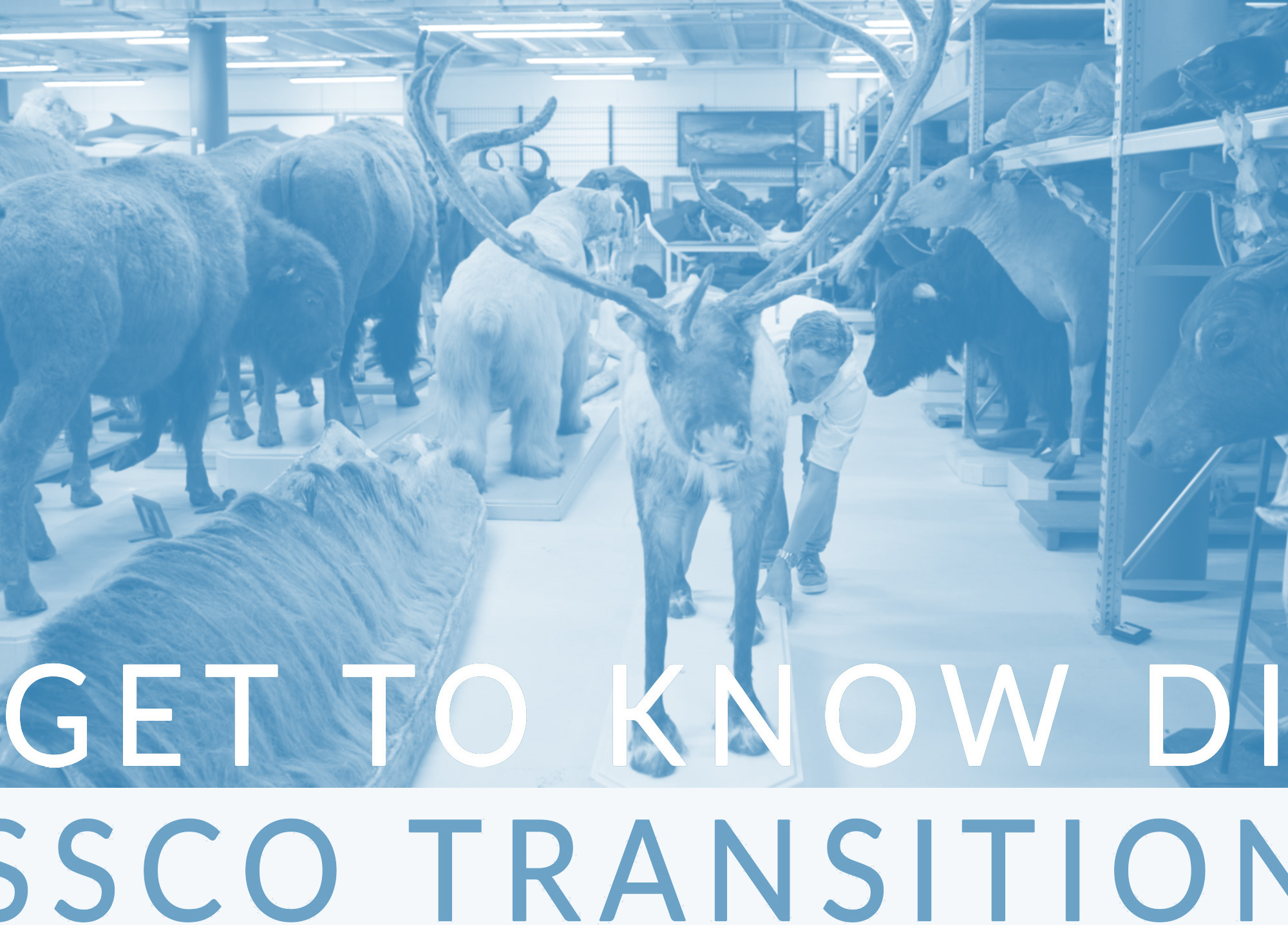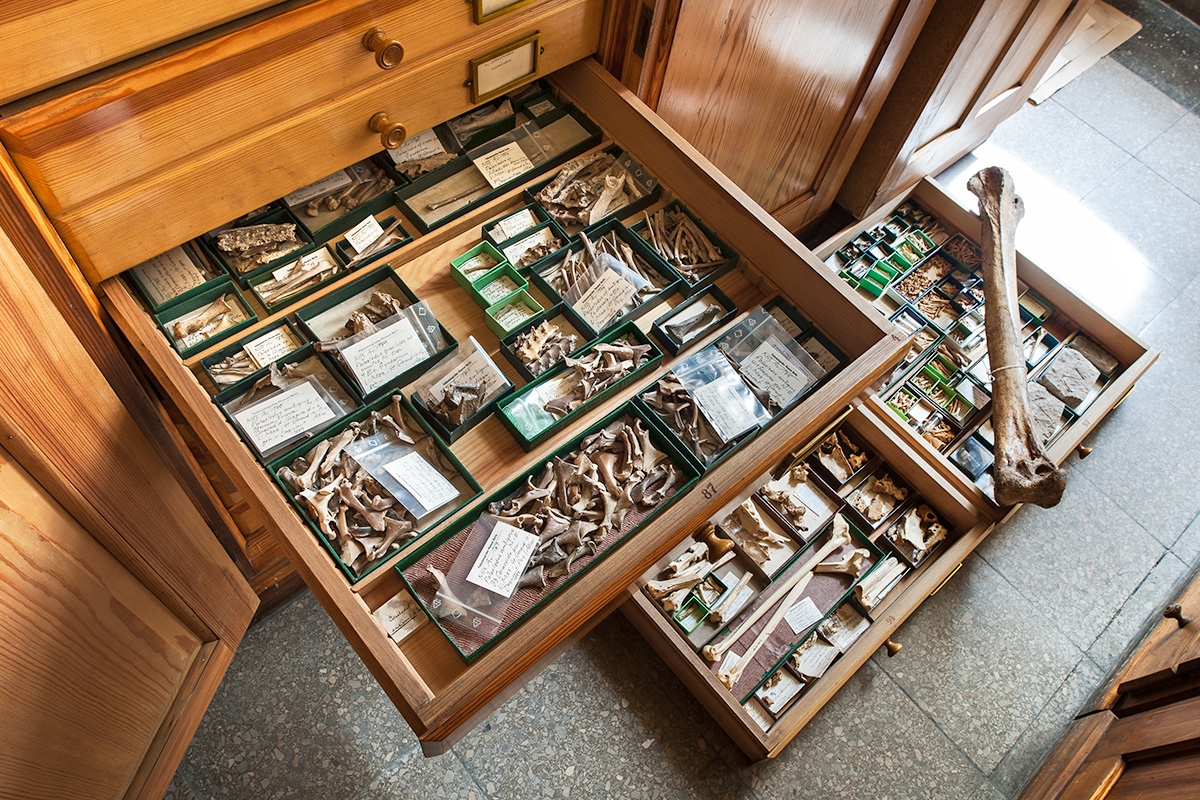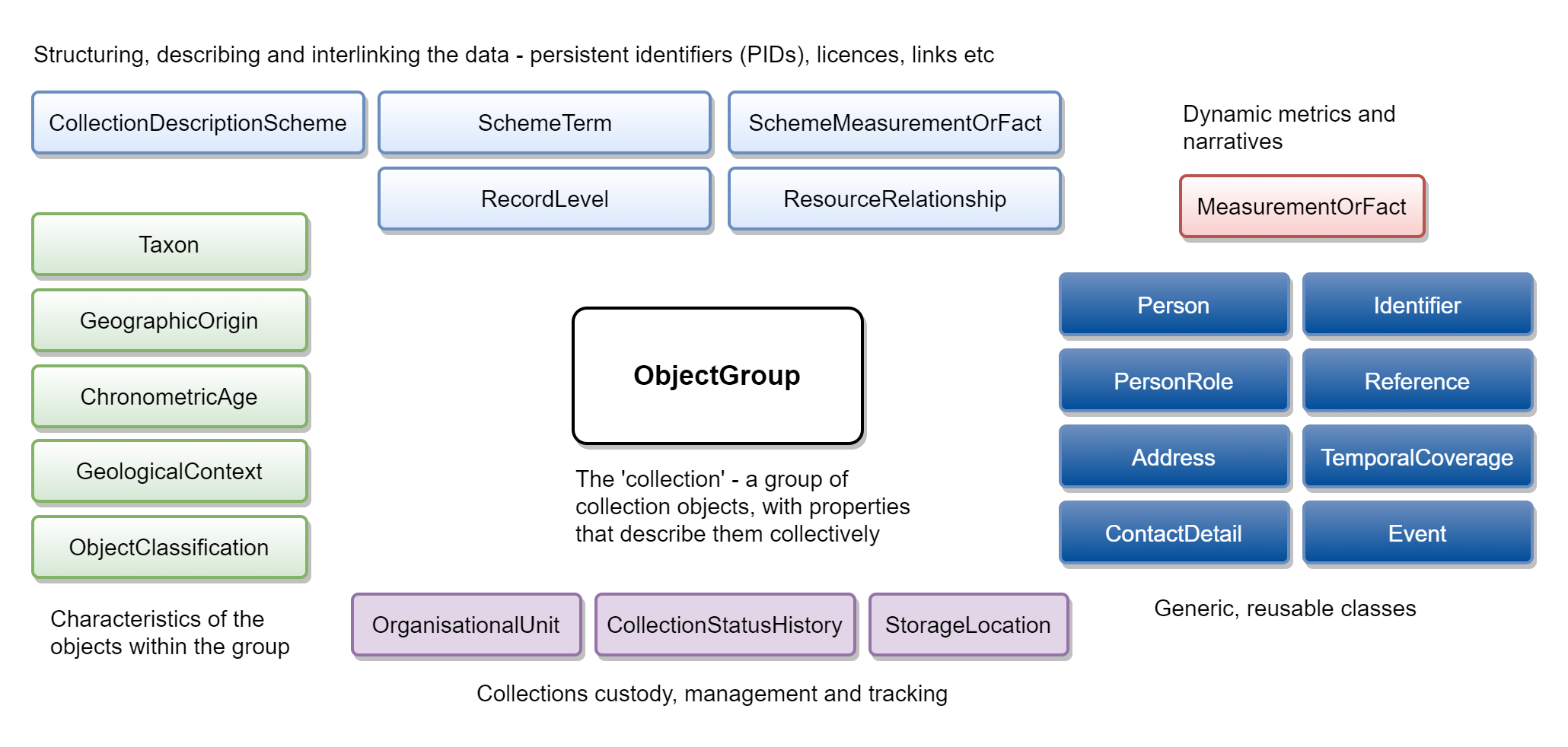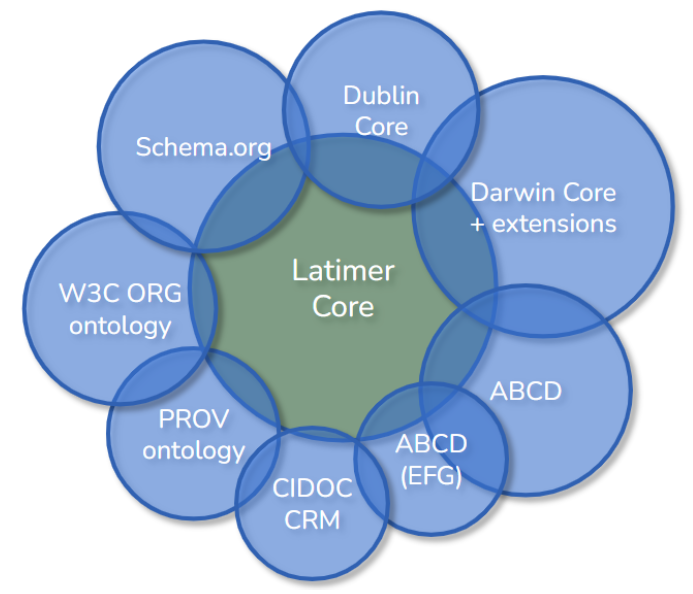
8 April 2024
Not even a month ago, TDWG announced a new data standard for collections: Latimer Core. It is indeed a new step for describing natural history collections, and one in which DiSSCo has had a crucial role. This brief post introduces the natural history collections standards and summarily describes the features of the new one: Latimer Core.
The context: there is a need for recording, describing and sharing collections data
Data derived from European natural history collections (NHCs) underpin discoveries and innovations that are fundamental for fighting challenges such as the current biodiversity crisis, global pandemics or climate change. The sheer magnitude of these challenges, however, calls for the scientific community to work together, thus breaking the traditional boundaries of research done in individual collections. Such collective effort can only be enabled by a harmonised approach to how collections record, describe and exchange their data. In other words, rather than keeping their own local way of recording, describing and sharing specimen data, NHCs need a set of common guidelines, understood and shared by all, so that collection data is interoperable across institutions.
The answer to that need was the development of the data exchange standards, agreed upon by a large portion of the scientific community. The main data standards for collections are Darwin Core and ABCD (Access to Biological Collection Data, which turns into ABCDEFG when Extended For Geosciences). They do a great job supporting exchange and integration across data structures, but they apply to individual items within collections and DiSSCo wanted to take one further step.

Rather than individual specimens, Latimer Core focuses on groups of objects. (Image source: Museum fur Naturkunde).
Latimer Core: Not only the specimen, please, also the drawer.
That step is called the Latimer Core (LtC) standard which, after more than four years of hard work, has recently joined Darwin Core and ABCD on the list of TDWG’s standards for collections.
What is the unique bit about LtC? Easy: it structures data about the groups of objects that collections and their subcomponents encompass. By “groups”, LtC understands any set of objects that have been intentionally tied together based on one or more shared characteristics. If, as mentioned earlier, Drawing Core and ABCD represent individual objects (i.e. specimens), “the classes and properties of Latimer Core aim to represent information that describes groups of specimens in enough detail to inform deeper discovery of the resources contained within them.” (Woodburn et al. 2022)
“A Latimer Core record may represent a grouping of objects at any level of granularity above the level of a single object, from an entire collection of an institution to a few objects in a single drawer. The classes within the standard aim to allow the high-level representation of any given collection by providing a framework within which the defining characteristics shared by objects in the collection can be described. Among others, these include their taxonomic, geographic, stratigraphic and temporal coverage, and a framework for adding quantitative metrics and narratives to help to quantify and describe the collections” (from TDWG).

Image: Summary of Latimer Core classes (source: Woodburn et al., 2022)
A flexible standard
Latimer Core is intended to be sufficiently flexible and scalable to apply to a wide range of collection description use cases. As stated above, “from an entire collection of an institution to a few objects in a single drawer”. For that, the standard builds on the ObjectGroup class, which represents a set of objects with one or more common characteristics. Around this basic class, there are others “commonly used to describe and classify the objects within the ObjectGroup, classes covering aspects of the custodianship, management and tracking of the collections, a generic class (MeasurementOrFact) for storing qualitative or quantitative measures within the standard, and a set of classes that are used to describe the structure and description of the dataset” (from TDWG).
Intersection with existing standards
Being a standard that focuses on natural history collections, it is only natural that Latimer Core has contact zones with a number of other standards for natural collection objects, like the ones mentioned above. “LtC’s scope also overlaps with standards for more generic concepts like metadata, organisations, people and activities (i.e., Dublin Core, World Wide Web Consortium (W3C) ORG Ontology and PROV Ontology, Schema.org). LtC represents just an element of this extended network of data standards for the natural sciences and related concepts. Mapping between LtC and intersecting standards is therefore crucial for avoiding duplication of effort in the standard development process, and ensuring that data stored using the different standards are as interoperable as possible in alignment with FAIR (Findable, Accessible, Interoperable, Reusable) principles. In particular, it is vital to make robust associations between records representing groups of objects in LtC and records (where available) that represent the objects within those groups.” (Woodburn et al. 2023)

Image: A visual representation of some of the standards with which LtC intersects (source: Woodburn et al, 2023).
Implementing Latimer Core
Last November 2023, our colleagues from Meise Botanic Garden published a report on their experience implementing the Latimer Core standard and gave some recommendations. You can find the report here: https://biss.pensoft.net/article/113766/element/4/10449835//
Additional information:
TDWG page on Latimer Core: https://ltc.tdwg.org/index.html
Read about Latimer Core in Github: https://github.com/tdwg/cd/wiki
The Latimer Core (LtC) schema is named after Marjorie Courtenay-Latimer. Go here if you want to know more about her.
Do you want to know more about the technical side of DiSSCo? DiSSCo puts different technical knowledge platforms at the scientific community’s disposal:
DiSSCoTech: Get the latest technical posts about the design of DiSSCo’s Infrastructure
DiSSCo Labs: A preview of experimental services and demonstrators by the DiSSCo community
DiSSCo GitHub: Code hosting for DiSSCo software, version control and collaboration